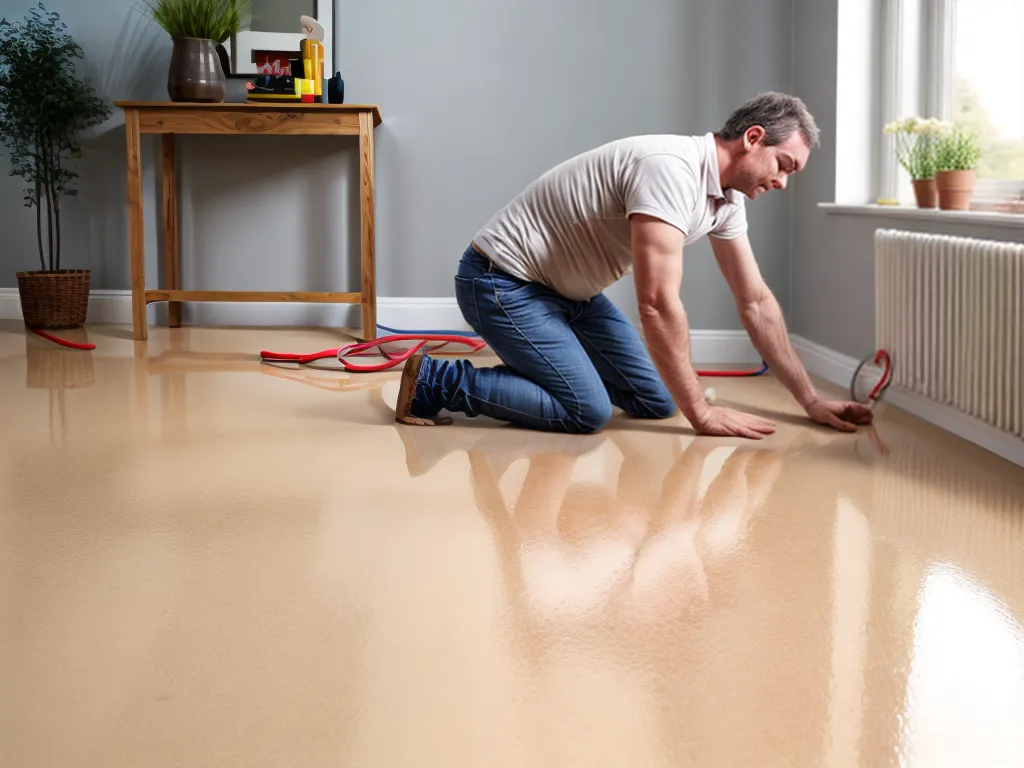
How to Install Underfloor Heating Without Damaging Your Floors
Installing underfloor heating can be a great way to provide consistent warmth throughout your home without the unsightly radiators or air vents. However, the installation process can be invasive, as it requires routing pipes or wires under the floor surface. This guide will walk you through how to install underfloor heating without damaging your existing floors.
Preparing for Installation
Before starting any work, it is crucial to fully plan out the project. This preparation will help avoid any unnecessary damage during the installation process.
Choose the Right Underfloor Heating System
There are two main types of underfloor heating systems:
- Hydronic systems use water pipes and a boiler or water heater to heat the floor.
- Electric systems use electric wires and a thermostat to heat the floor.
Hydronic systems require more extensive installation but provide more power. Electric systems are easier to install but may not heat as effectively over large areas.
Consider the size of the space and your heating needs when choosing the system type.
Design the Layout
Map out exactly where the pipes or wires will be positioned under the floor. Measure the floor area and create a detailed plan indicating the layout.
Consider the optimal pipe or wire spacing for even heating distribution. Most systems require pipes/wires to be spaced 6-12 inches apart.
Account for any floor irregularities like pillars or chimneys when designing the layout.
Choose Suitable Floor Coverings
Consider flooring materials that allow for underfloor system installation without much intervention into the surface. Stone, tile, and vinyl are ideal coverings as they do not require invasive subfloor preparation.
Wood can work if the panels are thin engineered hardwood rather than solid wood. Thick carpets are not recommended.
Porcelain or ceramic tiles are great conductors of heat and can enhance the floor warming effect.
Installing Underfloor Heating Systems
Careful installation techniques can allow for adding underfloor heating without having to completely replace existing floors.
Hydronic Systems
Install Floor Boards Above Insulation
For suspended wood subfloors, install rigid insulation boards on the concrete slab base first. Then place the subfloor planks above the insulation.
This creates a cavity to accommodate the piping without needing to dig into the wood.
Layout Piping in Floor Cavities
For concrete subfloors, use a router tool to cut ~1 inch deep channels in the slab base to lay the tubing down into.
You can also clip tubing to the underside of floor joists if going under wood subflooring.
Regulate Temperature
Use a thermostat and manifold to control water flow and temperature in different zones. This allows for precise regulation.
Install floor sensors to monitor floor temperature and prevent overheating.
Electric Systems
Install Over Existing Floors
Electric underfloor systems can be installed on almost any existing floor base.
Cables can be laid onto wood or concrete subfloors without channels. Floor leveling compounds or float boards may be added on top to create a flush surface.
Embed Wires in Thin Concrete
For concrete floors, wires can be laid into a thin new pour over the cured slab. This is less invasive than cutting channels.
Use Infared Heating Panels
Infrared heating panels attached underneath floor joists provide warmth without needing in-floor wires. This is completely non-invasive.
Control temperature with individual thermostats connected to each panel.
Finishing Touches
The final details ensure your floors are not only undamaged but also look great.
Apply Floor Leveling Compounds
Fill any sunken channels or cavities with floor leveling compounds. This creates an even, smooth floor.
Follow all manufacturer instructions for drying time before applying floor finishes.
Carefully Lay Floor Coverings
Install the final flooring carefully to avoid puncturing any of the tubing or wires. Use padding or adhesive that is compatible with underfloor heating.
Hire professionals for best results when laying stone, tile, or wood floors over the systems.
Run Initial Heating Tests
Turn on the system and monitor heating over 24-48 hours before covering with flooring. This verifies all connections function properly.
Adjust the thermostat and manifold to ensure even heating.
With proper planning and gentle installation techniques, you can successfully install underfloor heating without any damage to existing flooring. Take time to design the layout and prepare the floors. Then utilize methods like floor cavities or infrared panels to non-invasively embed pipes or wires. Your floors will be warmed, protected, and left beautifully in place.